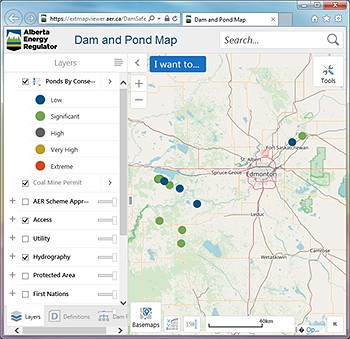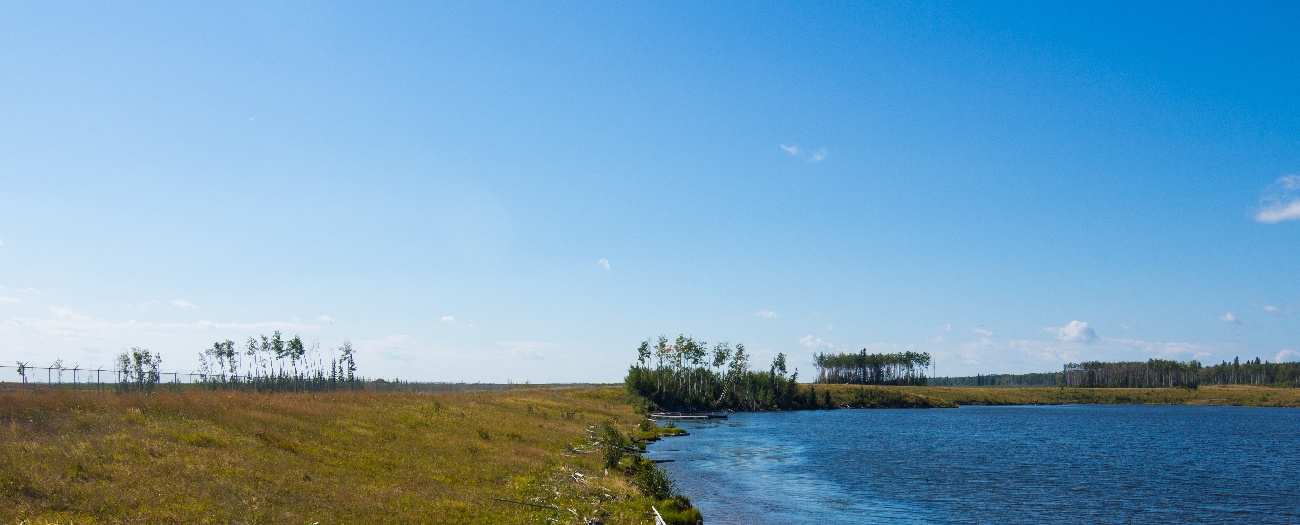How much do you know about the dams used in energy development?
Alberta - November 19, 2017Whether for canoeing or kayaking, ice fishing or paddle boarding, Albertans everywhere flock to the lake year-round for outdoor fitness and fun. What some don’t know is that we owe many of these beautiful bodies of water to dams.
Where is That Dam, Anyway?
Until this past fall, the locations of AER-regulated dams were not easy to find—in fact, they weren’t listed for public viewing. But the AER’s Dam Safety Program has released an interactive map to disclose oil and gas related pond locations in Alberta—down to the type of fluid stored and who owns it. The user-friendly map fulfills the auditor general's recommendations to improve the regulator’s program.

When we think of dams, we know they hold back water in reservoirs. We also know dams serve many purposes: aside from the recreational opportunities they provide us, they also prevent flooding, generate electricity, and supply water to cities and towns across the province. Dams offer something different for everyone—even beavers.
Dams also play an important role in Alberta’s oil, gas, and mining industries. Of the approximately 1500 dams in Alberta, over 180 are used in energy development.
At a glance these ponds and their dams resemble the reservoirs we fish in or draw drinking water from. Where they differ comes down to who uses them, and what’s inside them—what the dam is holding back.
“The size and type of structure will depend on where the dam is located, the project it’s associated with, and what it’s holding,” explains Santiago Paz, a dam safety engineer with the Alberta Energy Regulator (AER).
Putting Them to Work
Dams can be used in different ways during energy development. Sometimes they contain fluids such as tailings from oil sands and coal mining operations. Companies build these ponds and dams to keep the waste in place until it can be treated and reclaimed.
For activities like hydraulic fracturing, companies depend on water to get resources out of the ground; hence, they store water in nearby ponds and use it when needed.
“Wherever a company’s operations are, that’s where their ponds and dams will be,” says Paz. Unlike the reservoirs you drive past on your way to work, these ponds are rarely built next to towns and cities.
Regardless of a dam’s size or purpose, the AER’s job is to keep them safe. Our Dam Safety Program ensures that these dams are designed, constructed, operated, maintained, and decommissioned safely, and that the owners and the AER are prepared to respond in the event of an emergency. We audit and inspect dams each year; and also educate owners about AER requirements and how to manage their dams safely.
Developing the program hasn’t been without lessons. In 2015, the year the program began, the Office of the Auditor General of Alberta published recommendations from an audit conducted on the regulation of dams in Alberta. Following those recommendations, we developed a dam registry and procedures for reviewing and inspecting dams. Take a moment to learn more about our journey.
Kara MacInnes, Writer


